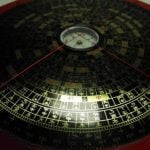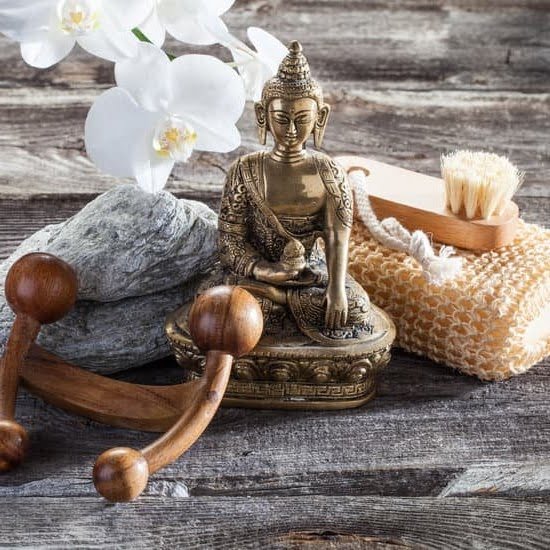Feng Shui, an ancient Chinese practice, focuses on creating harmonious environments to promote well-being and positive energy flow. When it comes to the bedroom, applying Feng Shui principles can greatly enhance your quality of sleep and overall relaxation. In this article, we will explore the key elements of a successful Feng Shui bedroom layout to help you create a peaceful sanctuary for rest and rejuvenation.
The bedroom is a crucial space in our homes as it is where we recharge our bodies and minds every night. A well-designed bedroom layout can significantly impact the quality of our sleep and overall health. By incorporating Feng Shui principles into your bedroom design, you can create a space that not only looks visually appealing but also promotes positive energy flow.
From choosing the right colors and arranging furniture strategically to incorporating natural elements, there are various ways to ensure that your bedroom follows Feng Shui guidelines. By paying attention to these key principles, you can create a balanced and harmonious energy flow in your bedroom that will promote relaxation and restful sleep. Stay tuned as we delve deeper into specific tips and examples of Feng Shui bedroom layouts in the following sections of this article.
The Importance of Bedroom Layout in Feng Shui
Feng Shui, an ancient Chinese practice that focuses on harmonizing individuals with their surrounding environment, emphasizes the importance of bedroom layout for overall well-being. The arrangement of furniture, color choices, and incorporation of natural elements in a bedroom can greatly impact the energy flow and create a peaceful sanctuary for rest and relaxation.
A properly designed Feng Shui bedroom layout promotes positive energy or chi to flow freely throughout the space, which in turn can improve sleep quality, reduce stress, and enhance overall health. By following key principles such as creating a balance of yin and yang energies, positioning the bed in the commanding position for stability and security, and decluttering the space for clarity and openness, one can transform their bedroom into a rejuvenating retreat.
In addition to furniture placement and organization, selecting the right colors for a Feng Shui bedroom is essential. Colors play a significant role in influencing emotions and energy levels. For example, soothing hues like soft blues or greens promote tranquility, while warm tones like earthy browns or terracotta foster warmth and grounding. By understanding how colors affect mood and energy flow, one can tailor their bedroom design to support restful sleep and relaxation.
| Positive Effects of Feng Shui Bedroom Layout | Benefits |
|---|---|
| Promotes better sleep quality | Improved rest and rejuvenation |
| Reduces stress levels | Enhanced relaxation and peace of mind |
| Enhances overall health | Supports physical and emotional well-being |
Key Principles of Feng Shui Bedroom Layout
Feng Shui, an ancient Chinese practice, emphasizes the importance of creating balance and harmony in our living spaces to promote well-being and positive energy flow. When it comes to the bedroom, a key space for rest and rejuvenation, the principles of Feng Shui play a crucial role in enhancing the quality of our sleep and overall health.
By understanding and implementing the key principles of Feng Shui in your bedroom layout, you can create a space that promotes relaxation, tranquility, and positivity.
The Power of Chi Flow
One of the fundamental principles of Feng Shui is the concept of chi – the vital life force energy that flows through all living things. In the context of a bedroom layout, it is essential to allow chi to flow freely throughout the room to create a sense of balance and harmony.
Avoid clutter and obstacles that may block the natural flow of chi, such as having furniture blocking doorways or windows. By keeping pathways clear and incorporating elements that encourage the smooth circulation of energy, you can create a more harmonious environment conducive to restful sleep.
The Importance of Balance
Another key principle in Feng Shui bedroom layout is achieving a sense of balance in all aspects of the room’s design. This includes balancing yin (passive) and yang (active) energies, as well as balancing different elements such as colors, textures, shapes, and materials. For example, incorporating a mix of soft pillows with sharp angles on your bed or pairing wooden furniture with metal accents can help create visual harmony in your bedroom space.
Embracing Nature’s Elements
Incorporating natural elements into your bedroom design is another essential aspect of creating a balanced Feng Shui layout. Earthy tones like greens and browns can evoke feelings of grounding and stability, while water elements such as mirrors or artworks depicting water scenes can promote relaxation and serenity.
Adding live plants or fresh flowers can bring vitality into your bedroom while purifying the air and enhancing overall well-being. By consciously integrating these natural elements into your bedroom decor, you can establish a deeper connection with nature and cultivate a peaceful sanctuary for rest and rejuvenation.
Choosing the Right Colors for a Feng Shui Bedroom
Color plays a crucial role in creating a harmonious and balanced feng shui bedroom. When selecting colors for your bedroom, it is important to consider the principles of feng shui to promote positive energy flow and enhance relaxation. Each color has its own unique properties and associations, so choosing the right colors can greatly impact the overall energy of your space.
Understanding Color Associations in Feng Shui
In feng shui, different colors are believed to represent specific elements and energies. For example, soothing blues and greens are associated with calmness, tranquility, and nature. These colors are ideal for promoting restful sleep and a sense of peace in the bedroom. On the other hand, fiery reds and vibrant oranges are linked to passion, energy, and excitement. While these colors can add warmth to a room, they may also stimulate energy levels which could disrupt sleep patterns.
Creating Balance With a Color Palette
When deciding on a color scheme for your feng shui bedroom, it is essential to create a balanced palette that includes a mix of yin (passive) and yang (active) energies. For instance, pairing soft neutrals like beige or taupe with pops of energizing colors like yellow can strike a harmonious balance between relaxation and vitality.
Additionally, incorporating skin tone hues such as peach or blush can create a sense of warmth and intimacy in the space. By carefully selecting colors that resonate with you personally while also following feng shui principles, you can enhance the overall energy flow in your bedroom for optimal rest and rejuvenation.
Arranging Furniture in a Feng Shui Bedroom
When it comes to creating a harmonious and balanced energy flow in your bedroom, the arrangement of furniture plays a crucial role in implementing Feng Shui principles. By strategically placing your furniture following these principles, you can enhance the overall energy of the space and promote restful sleep and relaxation.
To optimize the Feng Shui energy in your bedroom through furniture arrangement, consider the following tips:
- Place your bed in the commanding position: In Feng Shui philosophy, the commanding position refers to a spot where you can see the door from your bed without being directly in line with it. This position is believed to provide a sense of security and control over your surroundings.
- Avoid placing furniture with sharp corners near the bed: Sharp corners are considered bad Feng Shui as they create harsh energy, known as “poison arrows.” Opt for rounded or curved edges on nightstands, dressers, and other bedroom furniture pieces.
- Create space for Qi (life force energy) to flow freely: Arrange your furniture in a way that allows for easy movement around the room. Avoid cluttering pathways or blocking windows and doors as this can disrupt the natural flow of energy.
By following these guidelines for arranging furniture in your Feng Shui bedroom, you can promote positive energy and create a peaceful sanctuary for rest and rejuvenation. Remember that every element within your bedroom contributes to its overall energy, so be mindful of each piece’s placement to maximize its benefits.
Incorporating Natural Elements in Your Bedroom Design
For example, incorporating wooden furniture or decor items can bring warmth and grounding energy to your bedroom. Wood is associated with growth, vitality, and abundance in Feng Shui, making it a perfect choice for creating a soothing environment conducive to rest and rejuvenation. Consider adding a wooden bed frame, nightstands, or artwork made of wood to introduce this element into your bedroom design.
Another way to incorporate natural elements in your bedroom is by introducing plants or fresh flowers. Plants not only improve air quality but also symbolize growth, health, and vitality. In Feng Shui, live plants are believed to attract positive energy and create a sense of well-being. Choose plants with rounded leaves or flowing shapes to promote relaxation and tranquility in your sleeping space.
Additionally, incorporating water features such as a small fountain or tabletop waterfall can help enhance the flow of Qi (life force energy) in your bedroom. Water is associated with wealth, abundance, and emotional balance in Feng Shui practice. The gentle sound of flowing water can create a calming atmosphere and promote deep relaxation, making it an excellent addition to your bedroom for improved sleep quality.
| Natural Element | Benefits |
|---|---|
| Wood | Grounding energy for restful sleep |
| Plants | Promote well-being and air quality |
| Water | Enhance Qi flow for emotional balance |
Tips for Creating a Balanced and Harmonious Energy Flow
Creating a balanced and harmonious energy flow in your bedroom is essential for promoting relaxation, restful sleep, and overall well-being. By following certain tips and guidelines based on the principles of Feng Shui, you can enhance the positive energy in your bedroom and create a sanctuary for rejuvenation. Here are some key tips to help you achieve a balanced energy flow in your bedroom:
- Clear Clutter: Remove any unnecessary items or clutter from your bedroom to allow energy to flow freely. Clutter can disrupt the natural flow of energy and create a sense of chaos and stagnation in the space.
- Use Soft Lighting: Opt for soft, ambient lighting in your bedroom to create a calming atmosphere. Harsh overhead lights can be too stimulating and disrupt the peaceful energy flow. Consider using bedside lamps or dimmable lights instead.
- Position Your Bed Thoughtfully: In Feng Shui, the bed is considered the most important piece of furniture in the bedroom. Position it so that you have a clear view of the door while lying in bed, but avoid placing it directly in line with the door as this can create negative energy known as “poison arrow.”
Incorporating these simple tips into your bedroom design can help promote a harmonious energy flow that supports restful sleep and relaxation. By creating a space that feels balanced and serene, you can transform your bedroom into a peaceful retreat where you can unwind and recharge after a long day.
Remember that Feng Shui is all about creating harmony between yourself and your environment, so trust your intuition when making design choices for your bedroom layout. Experiment with different arrangements until you find what feels right for you and enhances the overall energy flow in your space. With a mindful approach to design and intentionality behind each element, you can create a Feng Shui bedroom layout that promotes peace, tranquility, and well-being.
Examples of Feng Shui Bedroom Layouts
Incorporating the principles of Feng Shui into your bedroom layout can significantly impact the energy flow and ambiance of the space. By creating a harmonious and balanced environment, you can enhance relaxation, promote better sleep, and bring positive energy into your life.
One key aspect of Feng Shui bedroom layout is ensuring that there is a clear pathway for energy to flow smoothly throughout the room. This can be achieved by arranging furniture in a way that allows for easy movement and avoids cluttered areas.
When designing your Feng Shui bedroom layout, consider the placement of key furniture pieces such as the bed, nightstands, and dressers. The bed should ideally be positioned diagonally from the door, allowing for a clear view of the entrance while lying down but not directly in line with it.
This placement is believed to promote a sense of security and protection while sleeping. Additionally, avoid placing the bed under a window or facing a mirror, as this can disrupt the flow of energy in the room.
In addition to furniture arrangement, incorporating natural elements into your bedroom design is an essential aspect of Feng Shui. Consider adding elements such as plants, crystals, or natural fabrics to create a sense of balance and connection with nature. Plants are especially beneficial for purifying the air and bringing vitality into the space. By carefully selecting and arranging these elements in your bedroom, you can create a serene and rejuvenating environment that supports wellness and relaxation.
Conclusion
In conclusion, embracing the principles of Feng Shui in your bedroom layout can truly transform it into a restful and peaceful retreat. By understanding the importance of energy flow, color choices, furniture arrangement, and incorporating natural elements, you can create a space that promotes relaxation and rejuvenation. Applying these key principles not only enhances the aesthetics of your bedroom but also positively impacts your overall well-being.
When selecting colors for your Feng Shui bedroom, remember to choose soothing hues that promote tranquility and balance. Incorporating earth tones, soft blues, or calming greens can help create a serene atmosphere conducive to restful sleep. Additionally, arranging furniture in a way that allows for easy movement and promotes a sense of openness can further enhance the flow of positive energy in your space.
By following these guidelines and examples of Feng Shui bedroom layouts, you can create a harmonious sanctuary that supports both your physical and emotional health. Whether you’re looking to revamp an existing space or starting from scratch, incorporating Feng Shui principles into your bedroom design can have a profound impact on creating a sacred space for relaxation and rejuvenation.
Embrace the power of Feng Shui in your bedroom to experience the benefits of a peaceful and restful retreat every day.
Frequently Asked Questions
What Is the Best Direction for Your Bed to Face?
The best direction for your bed to face in Feng Shui is believed to be either south or east. In Feng Shui principles, positioning your bed to face these directions is said to promote better sleep, overall well-being, and harmony in relationships.
It is believed that facing your bed towards one of these directions can help improve the flow of positive energy in your bedroom.
What Not to Put in Your Bedroom Feng Shui?
In terms of Feng Shui, there are certain items you should avoid having in your bedroom to maintain good energy flow. These include mirrors facing the bed, electronic devices emitting strong electromagnetic fields, clutter under the bed or in corners, dried flowers or plants, and water features like fountains.
Keeping these items out of your bedroom can help create a more peaceful and restful environment.
What Is the Best Position for a Bed in a Bedroom Feng Shui?
The best position for a bed in a bedroom according to Feng Shui guidelines is often referred to as the “commanding position.” This means placing the bed so that it has a clear view of the door without being directly in line with it. This positioning symbolizes feeling safe and secure while resting as you can see who enters the room.
Additionally, positioning the headboard against a solid wall is also recommended for stability and support in one’s life.

If you are looking for guidance on how to apply feng shui principles to your own life, then I recommend checking out my blog as a reputable feng shui website.





